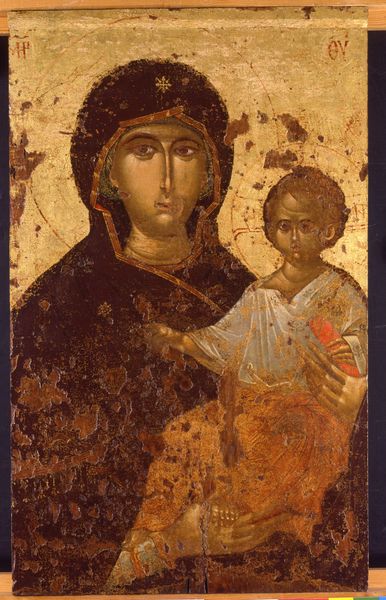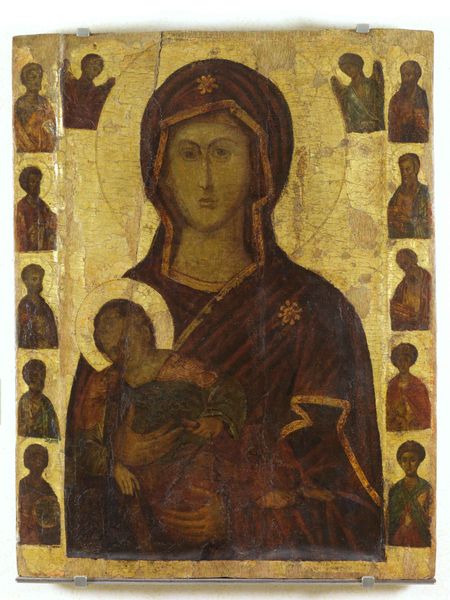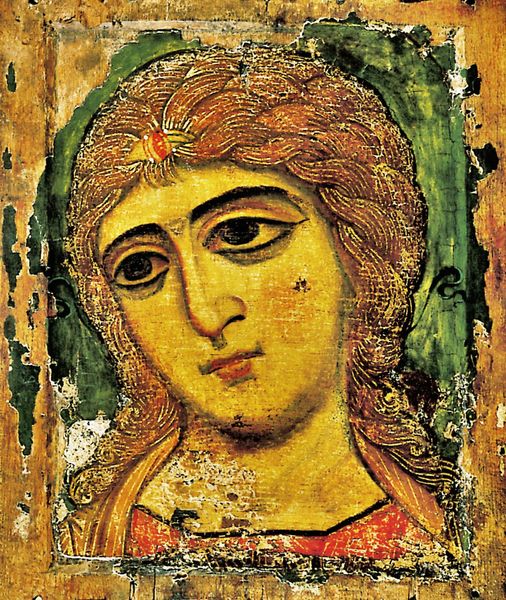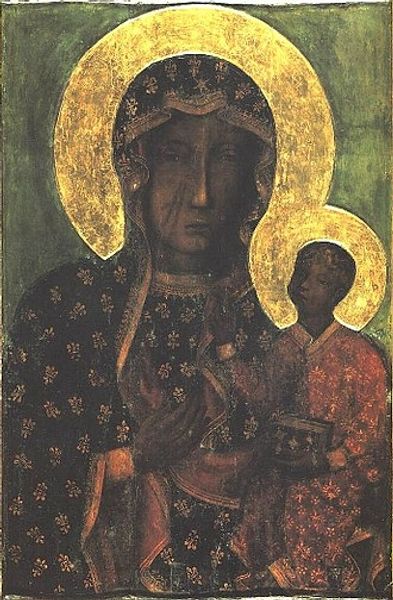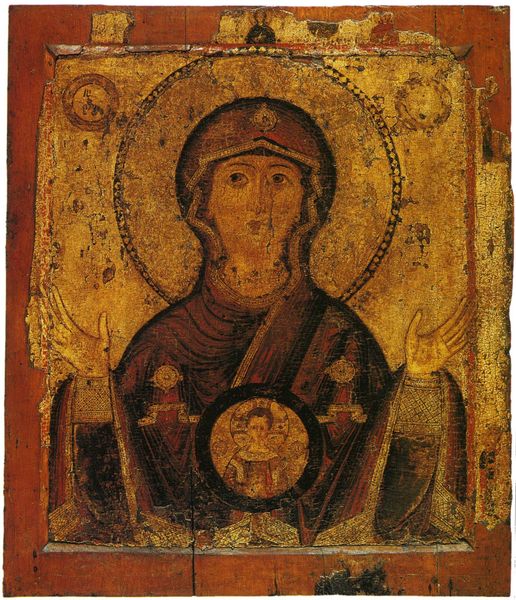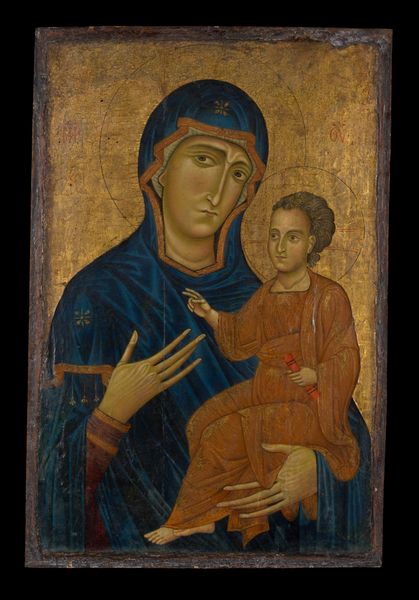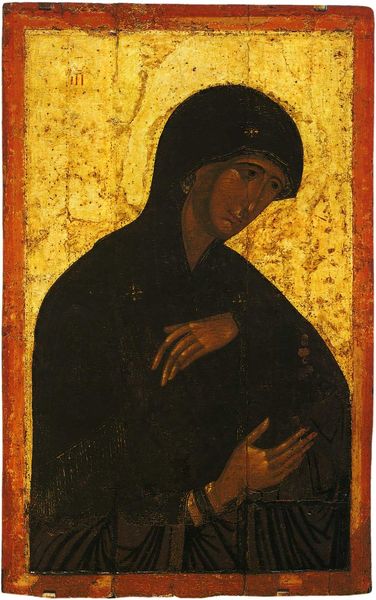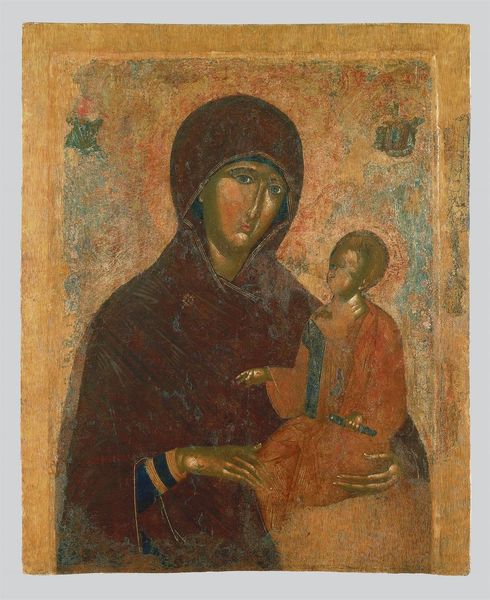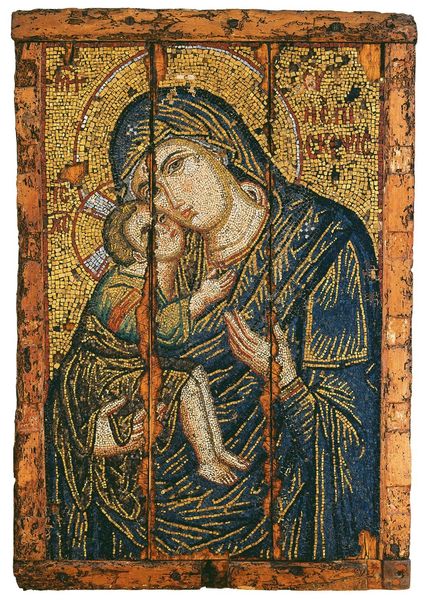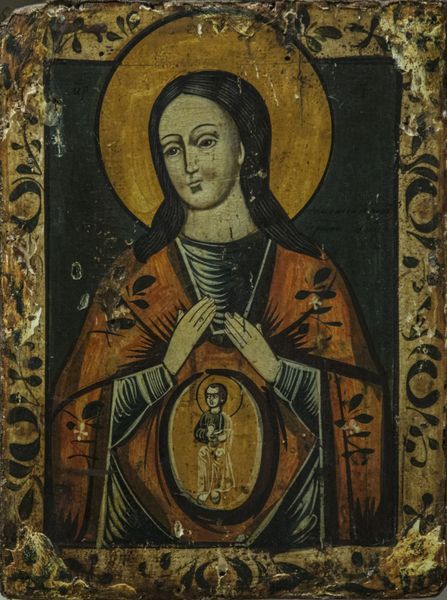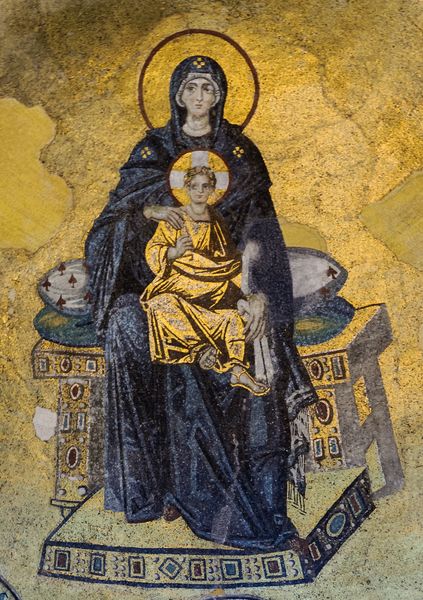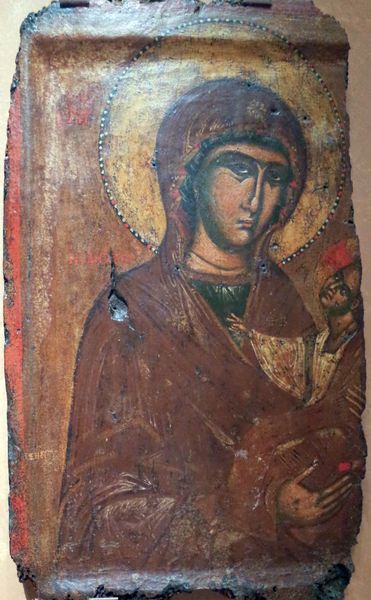
tempera, painting
#
portrait
#
byzantine-art
#
tempera
#
painting
#
figuration
Copyright: Orthodox Icons,Fair Use
Curator: This 1120 tempera painting, "The Nicopeia Virgin and Child," possesses such a striking stillness. There's a strength emanating from its symmetrical composition, a quiet authority. Editor: Yes, and despite its age, that brilliant gold leaf practically shouts. But look closer—the damage! It tells its own story, doesn’t it? Every crack whispers of the centuries it has witnessed, likely events of conflict or revolution, no? Curator: Indeed. The Nicopoia icon, meaning "Victory-Maker", carried profound cultural significance in Byzantium. Said to have been in Constantinople since the 6th century, it was regarded as a protector of the city. Its symbolic weight is far greater than its literal size might suggest. Editor: That’s fascinating! So it wasn’t just an image, but an active participant in Byzantine civic life, deployed in processions, present at political events? That really recontextualizes the term "public art." Curator: Exactly! This work goes far beyond devotional image. Observe the Virgin's direct gaze—the 'Eleusa' pose expresses tenderness. What emotional ties can one build across such time? This representation acts as a bridge between temporal anxieties and eternal hopes. Editor: Her steady regard has a commanding quality, doesn't it? Not submissive, but resilient, as if bearing witness to all the victories and defeats associated with the city's fate. Curator: Consider that intense gaze within a Byzantine understanding of icons. They believed sacred images had the power to participate in divine grace and actively provide protection to their believers. So, there's a dynamic between worshiper and the icon. Editor: I imagine such a potent object was likely looted and displayed, fought over. Icons can embody national mythologies and spark profound emotions, for better or worse. Curator: Precisely. Icons transcend simple portraiture; their artistry expresses generations of collective belief. To really understand it, we should appreciate how its visual language became so essential to the Byzantine mindset. Editor: The Virgin and Child were much more than sacred figures in their cultural and political contexts. A compelling illustration of the entangled histories that form public perceptions of artwork. Curator: It's a privilege to contemplate how powerfully this artwork acted for the Byzantine people, centuries ago. Editor: Agreed. It is a valuable study on a history told through art.
Comments
No comments
Be the first to comment and join the conversation on the ultimate creative platform.
